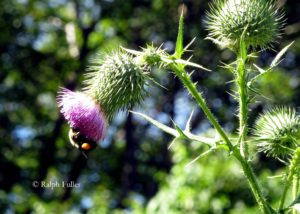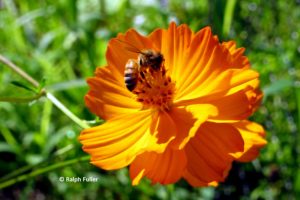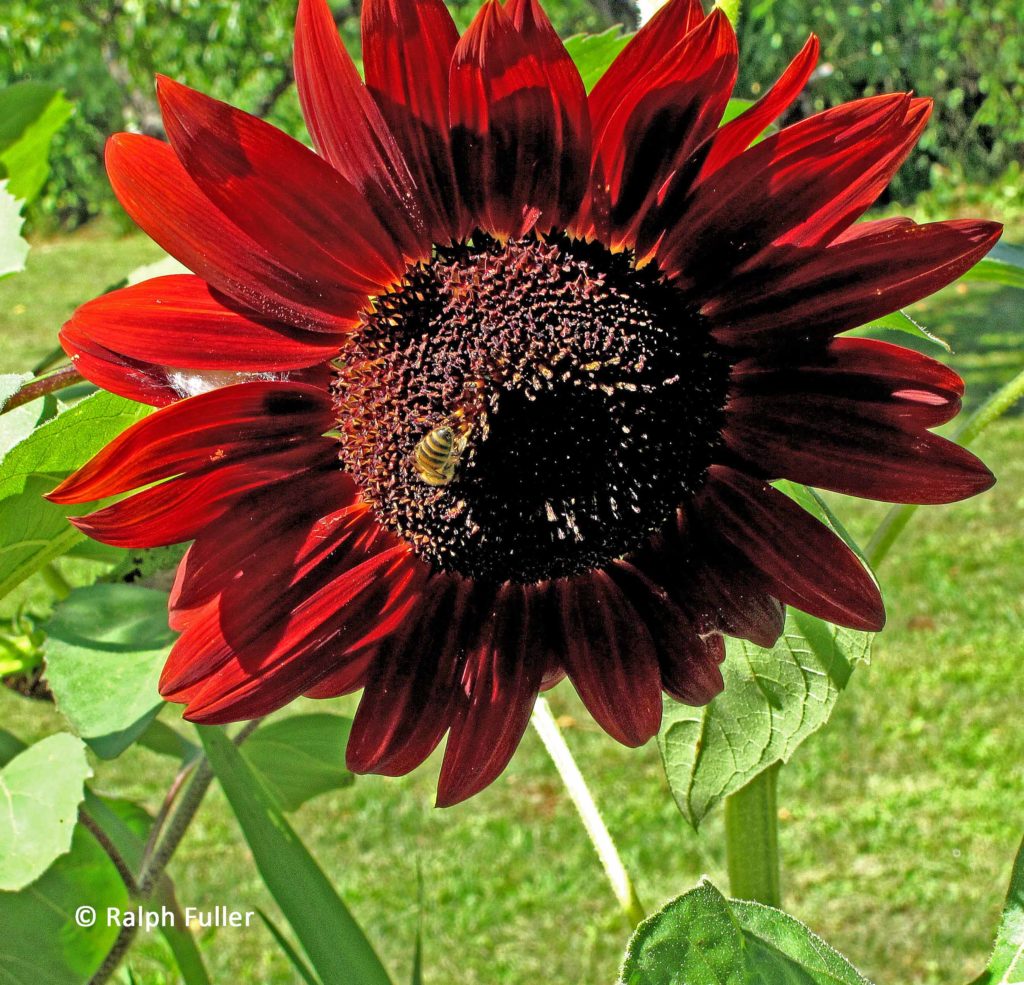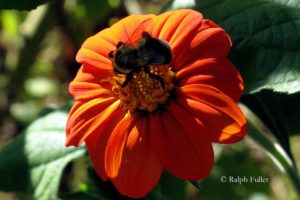Bees are the most important pollinators in the insect world, so significant that they are essential to our agriculture and to the environment.
- The great majority of fruits and vegetables that we eat are pollinated by bees, from apples to squashes and watermelons.
- The two major types of bees are social bees (honeybees and bumblebees) and solitary bees, which live in individual nests, usually holes burrowed into wood or the ground.
- Honeybees get the most attention because they live in colonies that can be moved from farm to farm to pollinate orchards of apples, groves of almonds and other crops. And, they produce honey.
- There are 4,000 species of solitary bees native to North America. They are highly efficient pollinators and actually do the bulk of pollination in gardens, parks and forests.
HONEYBEES:
Not native to North America, honeybees arrived with the first European settlements.
- Honeybee colonies center on egg-producing queens, with other members in structured roles.
- Drones are males whose only function is to mate with the queen (and then die off).
- Workers are sterile female bees who take care of the hive and collect food, bringing pollen back to their hives, processing honey and feeding the queen and larvae.
- A worker bee may visit 2,000 flowers in a day – 50 to 100 in one trip. When a worker bee finds a promising source of nectar and pollen, she returns to the hive and “dances,” or waggles her body to tell the other bees where it is.
- Queens may live for up to five years. Workers literally work themselves to death, often live for about five weeks and are constantly being replaced.
- Honeybees tend to locate their hives in hollow spaces like cavities in tree trunks.

BUMBLEBEES:
Bumblebees, which are native to North America, have colonies that are smaller than honeybee swarms and don’t produce honey.
- They do produce queens, drones and female workers, all of which die off at the end of the year.
- Before dying, the queen lays eggs that produce new queens, who survive through the winter and start new colonies in the spring.
- Bumblebees build their hives in cavities in the ground – often abandoned mouse dens.
- Bumblebees are such good pollinators of tomatoes that some growers utilize them in greenhouses to grow tomatoes year-round.
SOLITARY BEES:
The overwhelming majority of bees native to North America are solitary bees.
- They work more efficiently at pollinating flowers than honeybees.
- The solitary nests they build vary among species – for example, carpenter bees build nests in wood, mason bees with pebbles and mud.
- Generally, the females build their nests, lay eggs and forage for food to support the larvae that hatch from the eggs.
- For example, a mason bee may have branching tunnels off their central nests, each of which has one egg laid in it before being supplied with food and sealed off with mud.
For bees, pollen is highly nutritious, providing protein and other nutrients and they collect it as food to take back to their hives.
- Female bees of most species have “pollen baskets” on their legs, which they can comb pollen into for transport.
- Male native bees don’t have pollen baskets, don’t collect it for their nests but acquire it in their fur while seeking nectar, contributing to pollination.
CARPENTER BEES build their solitary nests by burrowing into wood – like decks and porches.
- However, they seldom do structural damage to the wood.
- They are quite good at pollinating many of the crops in the garden.
- Males don’t sting and females rarely do.
MASON BEES build their nests from pebbles and mud, often doing so in existing holes in wood.
- They are efficient pollinators; a few hundred can do the work of thousands of honeybees.
- They are especially useful for pollinating fruit crops like apples, almonds and blueberries.
SQUASH BEES specialize in plants in the cucurbit family, like squashes, cucumbers and pumpkins.
- They tend to forage early in the day, since squash flowers close up as the day goes on.
- They nest in burrows in the ground.
SWEAT BEES are often colorful, from metallic green to blue, copper, gold and sometimes black.
- They forage on many different types of plants.
- They usually burrow solitary nests in the ground.
- They like to lick salt from sweaty skin – and sometimes may land on your skin. However, they are not aggressive and rarely sting.
LEAFCUTTER BEES line their nests with pieces of leaves they cut from plants.
- They usually locate their nests in wood or hollow twigs. A few nest in the ground.
- They don’t carry pollen on their back legs like most bees but on the underside of their abdomens.
- They rarely sting, but when they do it’s pretty mild.
DIGGER BEES nest in burrows they dig in the ground, often concealing it with leaf litter or grass.
- More than 1,200 species of digger bees are found in North America.
- Some species are generalist forgers, others focus on specific types of plants
 HOW CAN WE HELP BEES? There are numerous things we can do to create healthy habitats for bees – and other beneficial insects.
HOW CAN WE HELP BEES? There are numerous things we can do to create healthy habitats for bees – and other beneficial insects.
- Plant a pollinator garden, emphasizing a variety of native flowering trees, shrubs, and wildflowers that bloom successively throughout the seasons. Native plants are more likely to meet local pollinators’ needs.
- Minimize the use of pesticides. Choose non-chemical solutions to insect problems.
- Provide a source of pesticide-free water and mud, like a dripping faucet, mud puddle, or birdbath.
- Provide nesting habitats for bees, whether a spot of bare dirt, an old tree stump or a bee condominium you can build.


